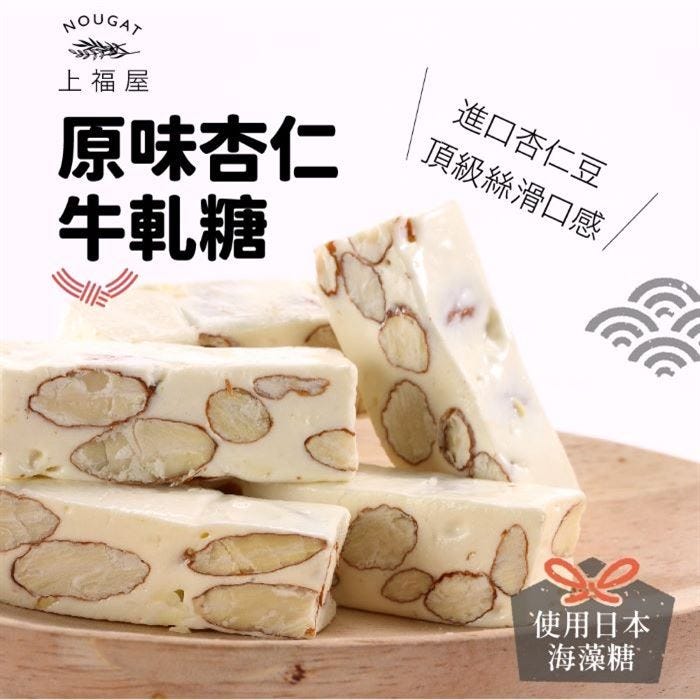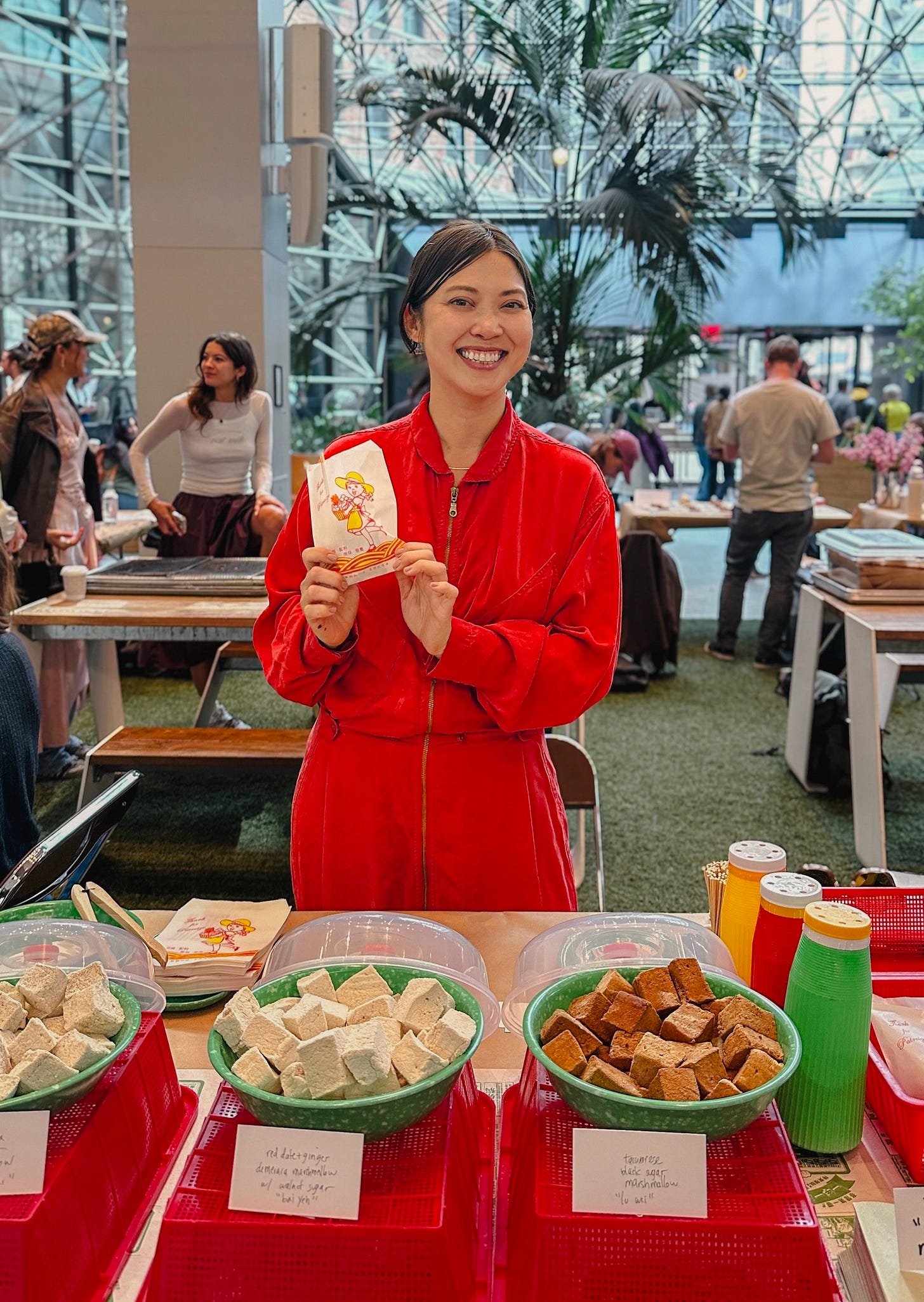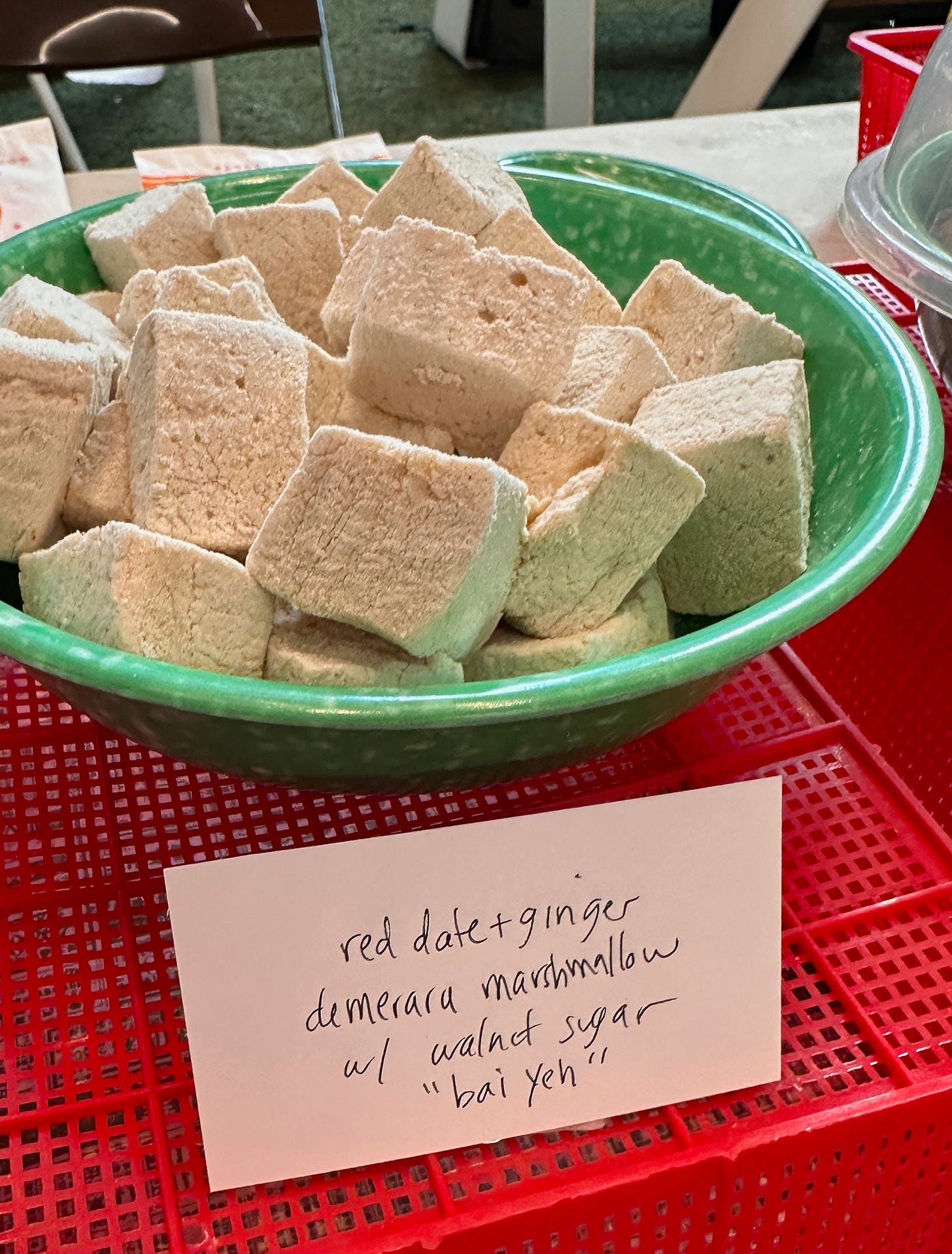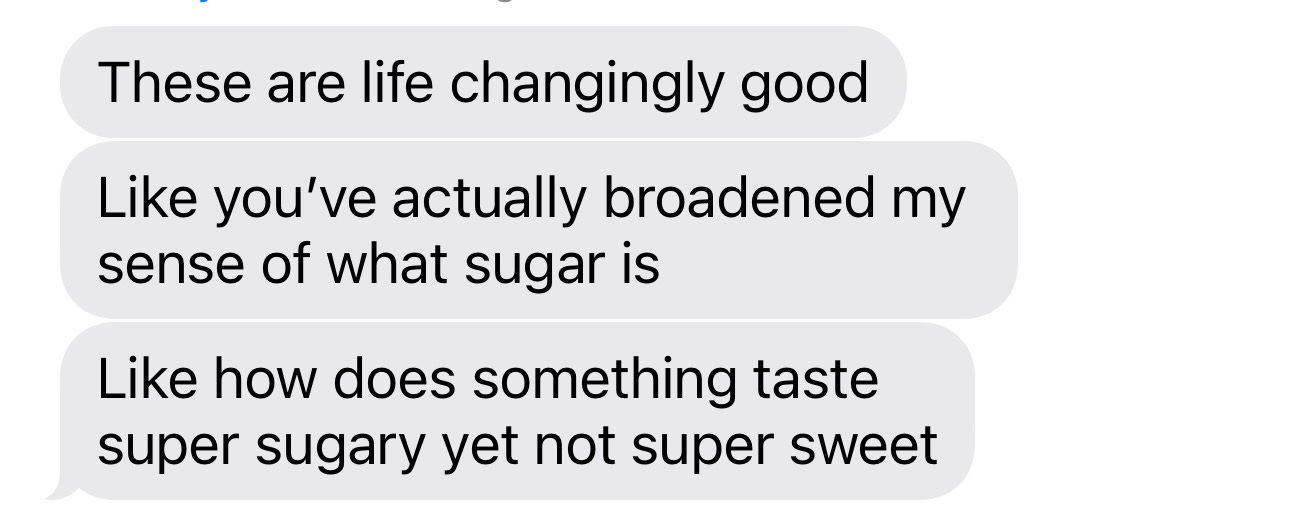Studio Notes 06: Mian Hua Tang
a Taiwanese-inspired marshmallow recipe and a raffle for Gaza mutual aid
Hi, it’s Lisa Cheng Smith, founder of Yun Hai. I write Taiwan Stories, a free newsletter about Taiwanese food and culture. If you aren’t yet a subscriber, sign up here.
This is Studio Notes, a paid series within that newsletter. It’s an informal exploration of the things on my desk—cultural references, first-hand research, and archival material—all in relation to how we tell stories, create spaces, and design products at Yun Hai.
Your paid subscription supports the free newsletter and our cooking show, Cooking With Steam. If you’re a paying subscriber, thank you! If you’d like to read behind the paywall but aren’t able to subscribe, I also trade words for words—reply to this email and let me know.
Oh, also, I misnumbered the last Studio Note as seven, so this one’s number six.
PSA! We are raffling off a complete family of green Tatungs (11-cup, 6-cup, mini, and ultra mini vending machine figurine) to fundraise for Gaza mutual aid. 100% of proceeds will go to Gazan families in need, via a grassroots fund organized by Taiwanese artist and ceramicist Stephanie Shih.
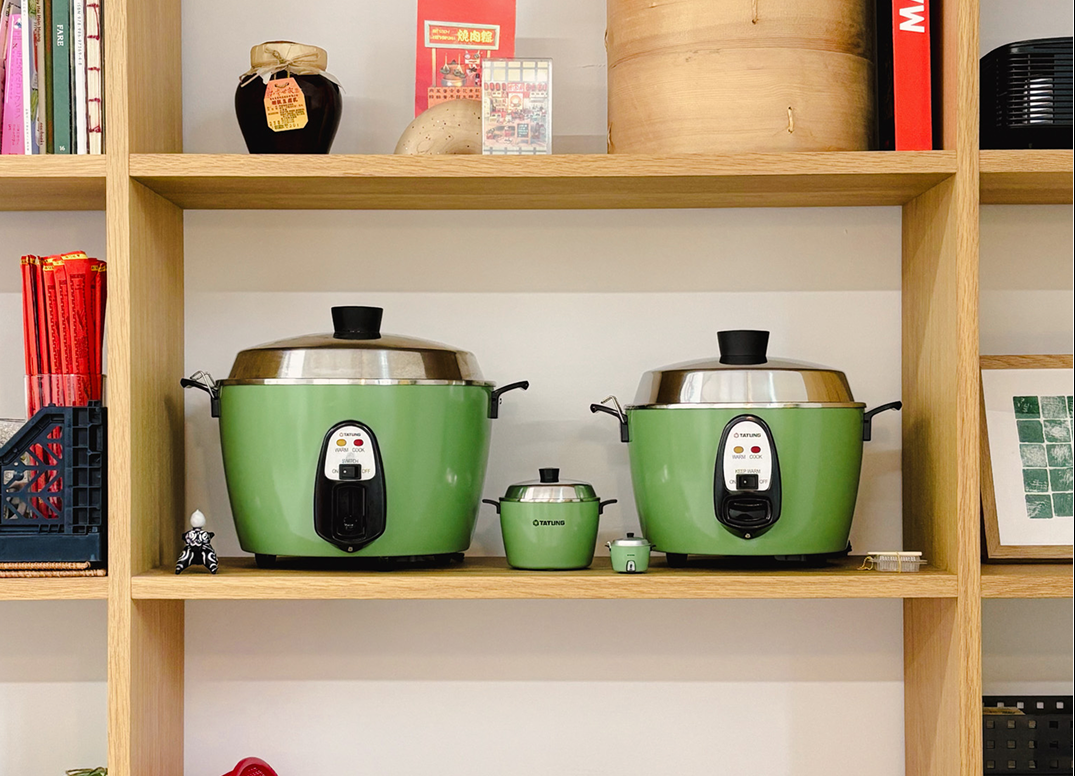
How to Enter: Venmo @yunhaishop with your email address in the payment note. $5 per entry. Multiple entries welcome—send one payment for multiple entries (e.g., $25 for 5 entries). Entries accepted through Wednesday, October 22nd. Prize ships within the US only. We will contact the winner on Monday, October 27th.
If you wish to donate, but do not wish to enter the raffle, add “no entry” to your payment note.
More details on Instagram.
I’ve been on a quest for the perfect marshmallow. As someone who has not, until this time, ever shown any particular interest in or love for marshmallows, I never thought I would type those words.
Before you stop me and say “I thought this newsletter was about Taiwanese food,” let me stop you: yes, it is, and the marshmallow does have a place. Read on.
When my friend Natasha Pickowicz—pastry chef, bake sale organizer, and cookbook writer—asked me to join one of her community bake sales, I immediately agreed. Not only because it would be one of the most fun pastry events of the year, or that it would benefit four NYC-based organizations (for which I have endless gratitude and appreciation), but also because there’s nothing I love more than a recipe challenge.
I’m not a baker, but I do love Taiwanese candies with their robust ingredients, not-too-sweet flavor, and cornucopia of textures. Since my oven scares me (requesting a YouTube series called Cooking with Oven if anyone could oblige), I thought candy would be the way to go.
This bake sale was going to be extra-big, and I needed to make 100 portions from my home kitchen.
My criteria:
batchable
shelf-stable
relatively simple
Taiwanese or Taiwanese-inspired
I settled on the idea of making Taiwanese milk nougat 牛軋糖, a favorite candy of mine. It’s endlessly variable, and found in probably every 7-11 on the island.
Traditional nougat is a candy made from sugar, an emulsifying agent, and various mix-ins. The sugar is whipped, aerated, and mixed with flavorings. The type of sugars used ranges from regular granulated sugar to honey or maltose, and the aeration agent is usually egg whites. The batter is left to set, and then cut into pieces when cool.
There’s another version of this, too: marshmallow nougat. It’s not a true nougat in the traditional sense, though it exists comfortably in the same family. In this version, one starts with marshmallows, melting them in butter and mixing in milk powder, nuts, and dried fruit. Then the batter is set into a rectangular shape, cooled, and cut into bars.
This kind of nougat is a little softer and easier to work with. It mirrors the gelatin-based nougats sometimes found in candy bars, but is produced with marshmallow as an intermediary shortcut. I thought I’d go this route since it would be more viable to make in volume.
And, this is where I confirm that this newsletter is still firmly about Taiwanese food and I haven’t gone Pumpkin Spice on you.
Here’s an example of this style:
I made a few batches, with the idea that I’d fold all kinds of fun things in, from dried green mango to sweet potato Kuai Kuai, but I just couldn’t get past the taste of the conventional American marshmallow base, with its cloying sweetness, whipping agents, blue dye, corn syrup, and processed sugars. I was chasing delicateness, sophistication, clouds, and the not-too-sweet nutritive character of Taiwanese dessert, so I decided I should try to make my own.
I never got past this step. I made marshmallows for a week straight in all my free time (late nights, early mornings). I became obsessed with how well they could telegraph and capture flavor, and show off the qualities and textures of different kinds of sugars. Taiwan has produced sugar for centuries; it’s actually a foundational crop, and I realized candy-making was a fun way to think through this.
Though I never got to the nougat (next newsletter, ok), I did manage to come up with a process for making not-too-sweet marshmallows using unrefined or partially refined sugars common in Taiwanese cuisine: black sugar, golden sand sugar 二砂糖 (similar to demerara), and red rock sugar. These range in how refined they are, but all retain some level of their original color, flavor, and minerals and none are fully refined.
For flavorings, I leaned heavily into ingredients that I’m fond of in Taiwanese candies and tea shops. I ended up with three varieties that I sold in a mixed bag of six:
Taiwanese Black Sugar Marshmallow (pure and simple)
Golden Sand Sugar Marshmallow with Red Date, Ginger, and Walnut Powder
Red Rock Sugar Marshmallow with Oolong Tea
Others that i’ve thought of that I hope to experiment with:
Pearl Guava with Plum Powder
Grass Jelly
Soy Sauce Caramel
I made over 600 of them for Natasha’s bake sale fundraiser. Because I ran out of time to put them into boxes, I improvised a night market stand, displaying them in bowls and baskets and distributing them in little popcorn chicken bags with bamboo sticks. I was a little worried about how they’d be received—marshmallows being slightly cheugy and the presentation skewing savory—but I thought, hey what could go wrong? It’s a donation. If there’s any time to zag, it’s now.
Here I am with the Taiwanese marshmallow concept, fully rolling last Saturday at the sale:
I think it went over well! Chef Lucas Sin came by to let me know they were one of the best things he’d eaten all day. Video producer Inga Lam storied them as being incredible. Fellow vendor Parlor Coffee came by with a gift of (excellent) roasted beans and told me they’d been hearing that the marshmallows were the sleeper hit of the fest. I’d be happy with them anyway, but it was nice to get some direct evidence of success.
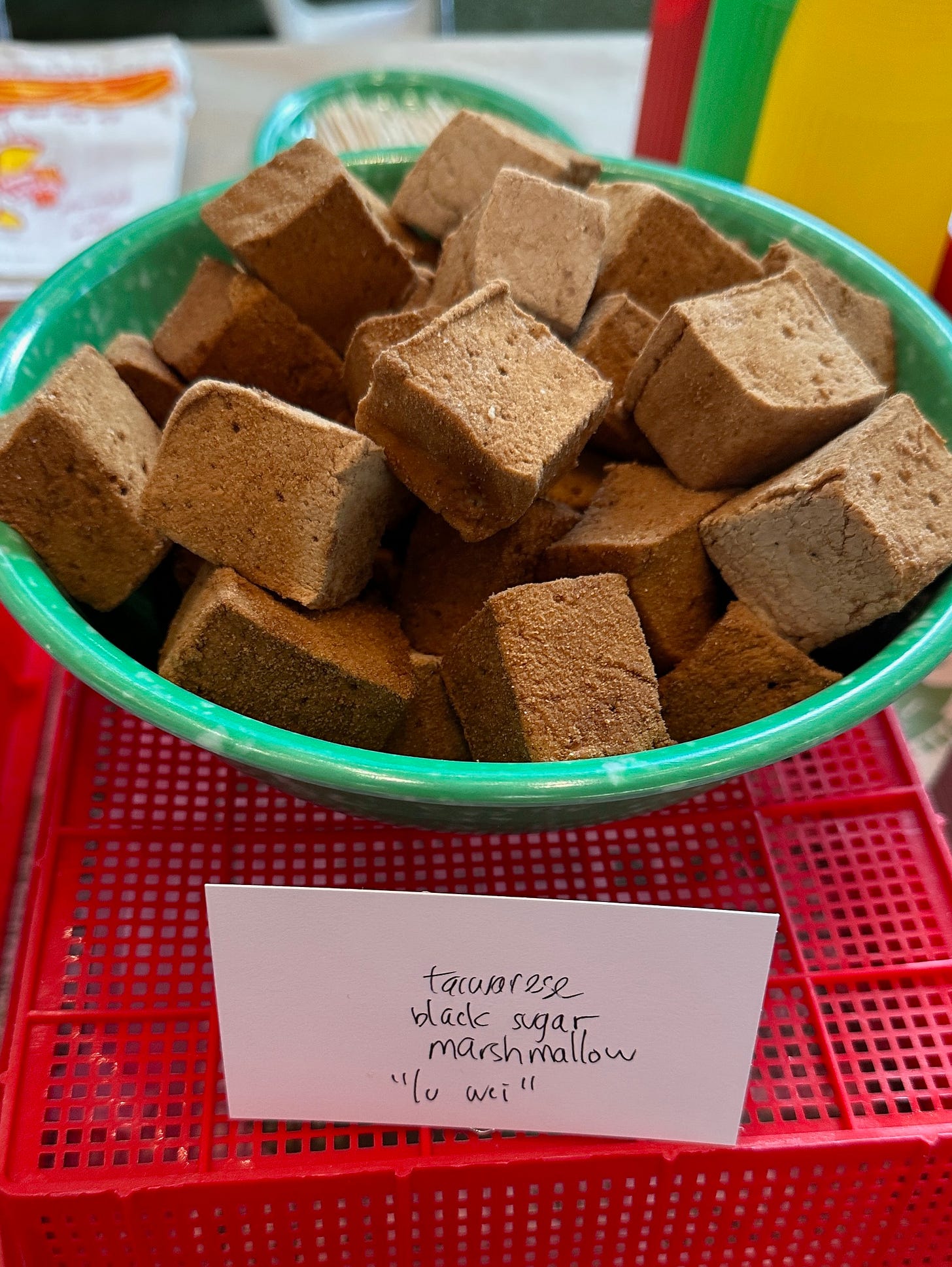
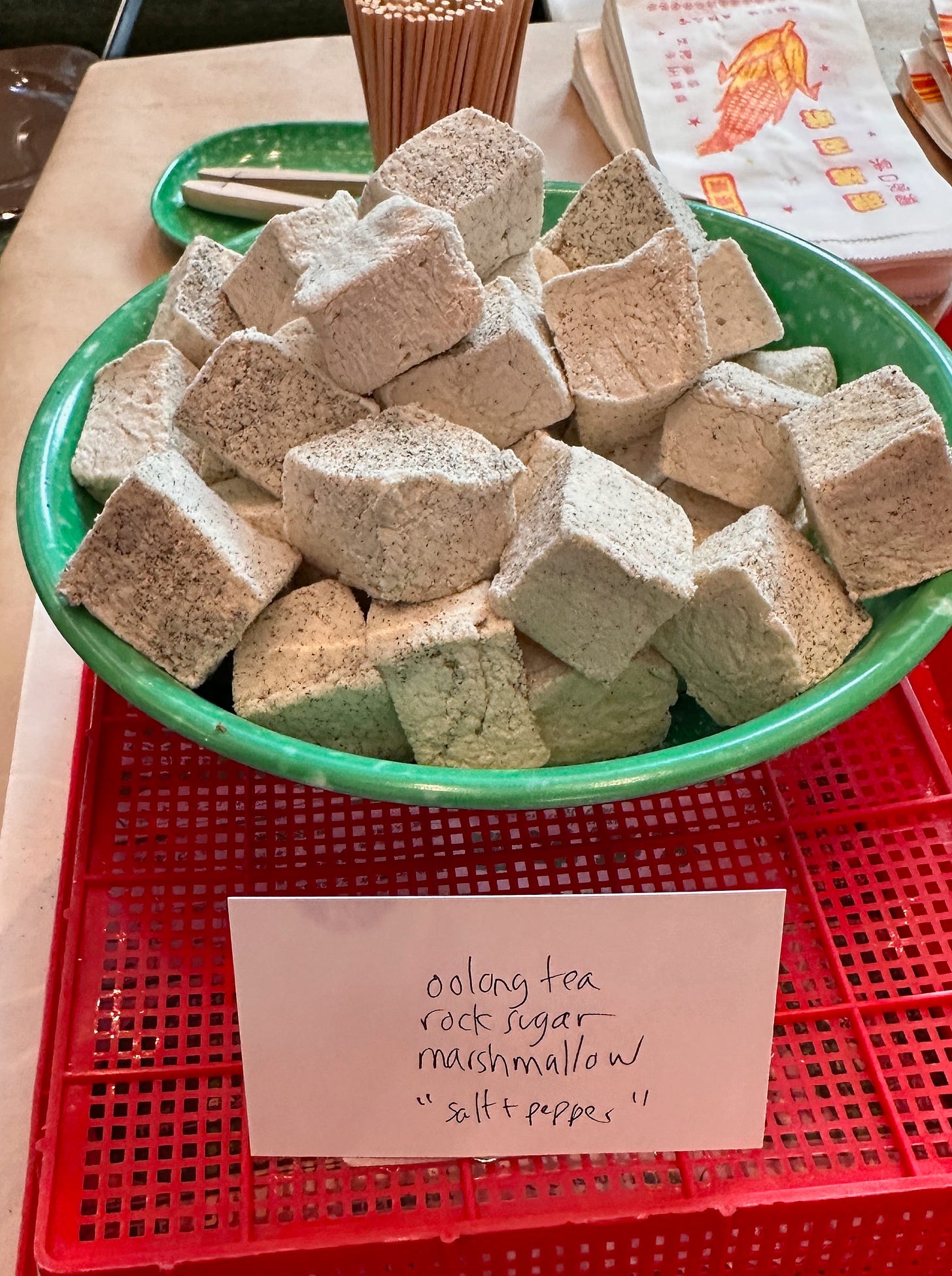
I went home and happily slept for 7 hours straight, which is about all I can manage at once these days, given my steady diet of oolong tea. I dreamed of nougat possibilities and what else I could do with these. Jeremy, our store manager, texted me with the suggestion that we close the shop and become a marshmallow bakery. Then I sat down to write this newsletter. We’ll see what happens.
For paid subscribers, here’s my base recipe and some tips on flavoring, which I encourage you to endlessly vary any which way you please.
Recipe: Mian Hua Tang
A marshmallow is three things: water, gelatin (or marshmallow root sap), and sugar. All this is heated and aerated in a simple way to create a fluffy, sweet, cloud-like batter that then sets up into a squishy, shelf-stable candy.
Conventional recipes on the internet will tell you that the marshmallows ought to contain corn syrup, agave syrup, or other invert sugar (read: syrup), which will help stabilize the candy and keep it from recrystallizing. I ignored this completely because I found it cloying and used 100% unrefined or partially refined sugars.
The process of changing rock sugar into a cloud has a poetic aspect to it that I just can’t walk away from. And then powdering that same sugar to coat the marshmallows, dusting itself in itself? Alchemic.



